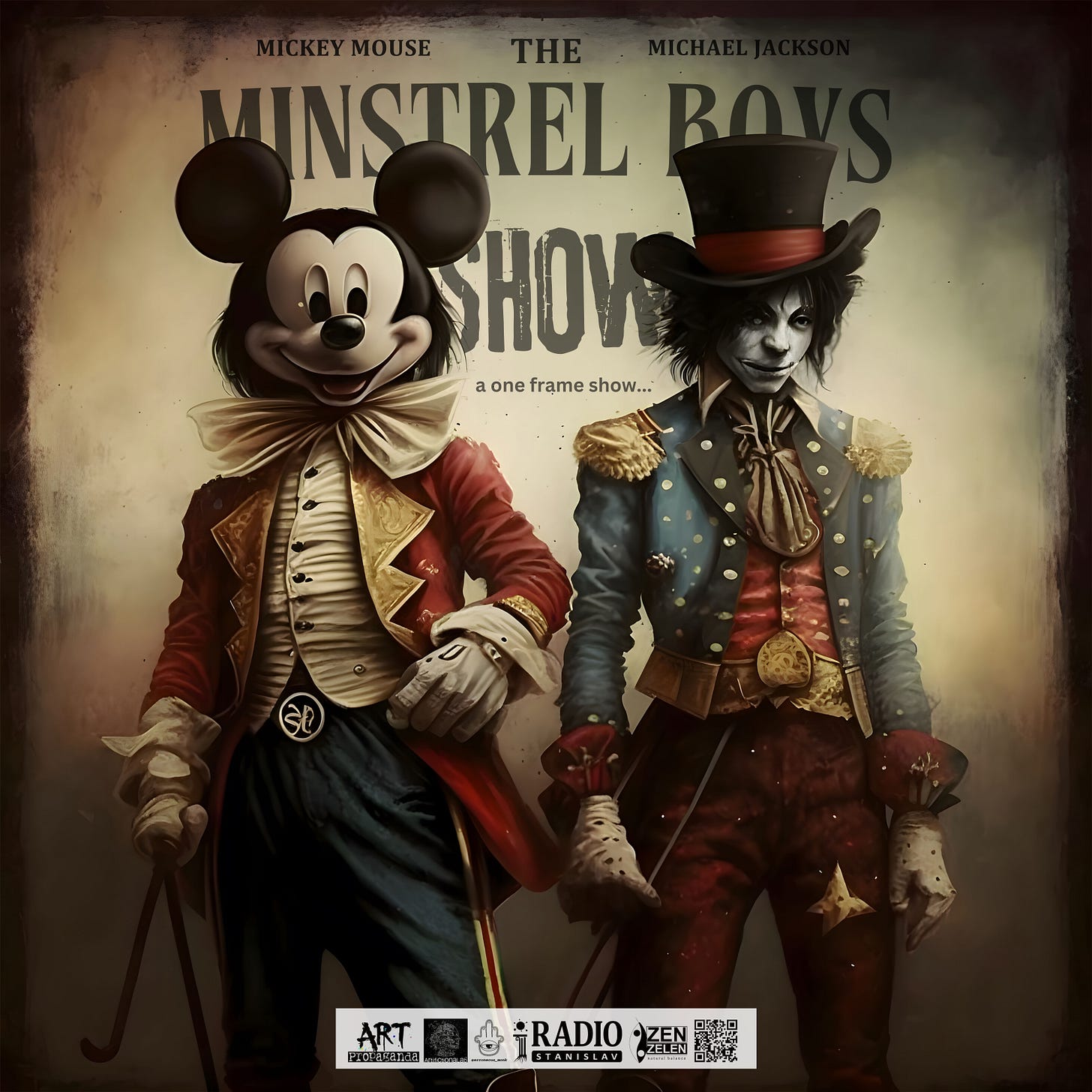The Minstrel Boys Show
From Mickey Mouse to Michael Jackson: Tracing the Echoes of Minstrel Shows in American Entertainment
An intriguing argument can be made that Mickey Mouse echoes elements of minstrel shows. Nicholas Sammond’s book, "Birth of an Industry: Blackface Minstrelsy and the Rise of American Animation," sheds light on how early American animation, including characters like Mickey Mouse, was influenced by minstrel shows. These shows, with their racial caricatures and exaggerated performances, significantly shaped the aesthetics and design of early animations.
Mickey Mouse’s initial design and animation style drew from the exaggerated physicality and visual motifs of minstrel performances. For example, early cartoons, including those featuring Mickey, utilized oversized gloves and expressive movements—elements that trace their origins back to theatrical traditions like minstrelsy, where gloves were used to enhance stage presence.
In Patricia Holt’s article, "The Minstrel Show Never Faded Away" (San Francisco Chronicle, May 21, 1996), the enduring impact of minstrel shows on American culture is explored. Holt highlights how the stereotypes and styles of minstrel shows permeated various media, including animation. Although early Mickey Mouse cartoons were not overtly racial, they retained some visual and performative conventions of minstrelsy, reflecting a broader cultural legacy.
Estelle Caswell’s Vox article, "Why Cartoon Characters Wear Gloves" (February 2, 2017), also touches on this topic. Caswell discusses how animation preserved stylistic elements from earlier performance traditions. Mickey Mouse’s iconic gloves are a testament to this continuity, showcasing the influence of performance aesthetics that include minstrel show traditions.
The historical analysis of minstrel influence on animation and cultural media indicates that Mickey Mouse reflects the broader performative and aesthetic conventions of minstrel shows. This illustrates how elements of minstrelsy persisted and were adapted into new forms of entertainment.
Similarly, the influence of minstrelsy can be observed in Michael Jackson's career, though the connections are more indirect compared to early animation. Jackson’s performances often incorporated theatricality and showmanship reminiscent of vaudeville and minstrel traditions. His elaborate stage setups, dynamic dance routines, and dramatic presentations echo the performative aspects of these earlier entertainment forms.
Jackson’s famous white glove, while distinct from minstrel show conventions, draws on the tradition of performers using gloves to enhance their stage presence. Though the gloves in minstrel shows were tied to racial caricatures, Jackson's gloves were about creating a unique and memorable look.
Jackson’s dance style, including moves like the moonwalk, carries echoes of earlier performance traditions. His choreography, while not directly linked to minstrelsy, draws from a rich history of performance and dance that includes influences from vaudeville and minstrel shows, known for their elaborate and stylized routines.
Jackson’s costumes and persona, often featuring military-inspired or fantastical designs, reflect a broader theatrical tradition. The use of costume to create a larger-than-life persona has roots in various performance traditions, including minstrel shows and vaudeville, where costumes were used to enhance stage presence and character portrayal.
Although Michael Jackson’s work sometimes engaged with themes and aesthetics rooted in earlier American entertainment forms, his career also involved efforts to challenge stereotypes and break down racial barriers. His influence from historical performance traditions is part of a broader narrative of how entertainment evolves and intersects with cultural history.
While neither Mickey Mouse nor Michael Jackson is a direct continuation of minstrel shows, their work reflects how performance traditions have evolved and intersected with new forms of entertainment. Both figures embody a complex interplay of historical influences and modern innovation in performance.





